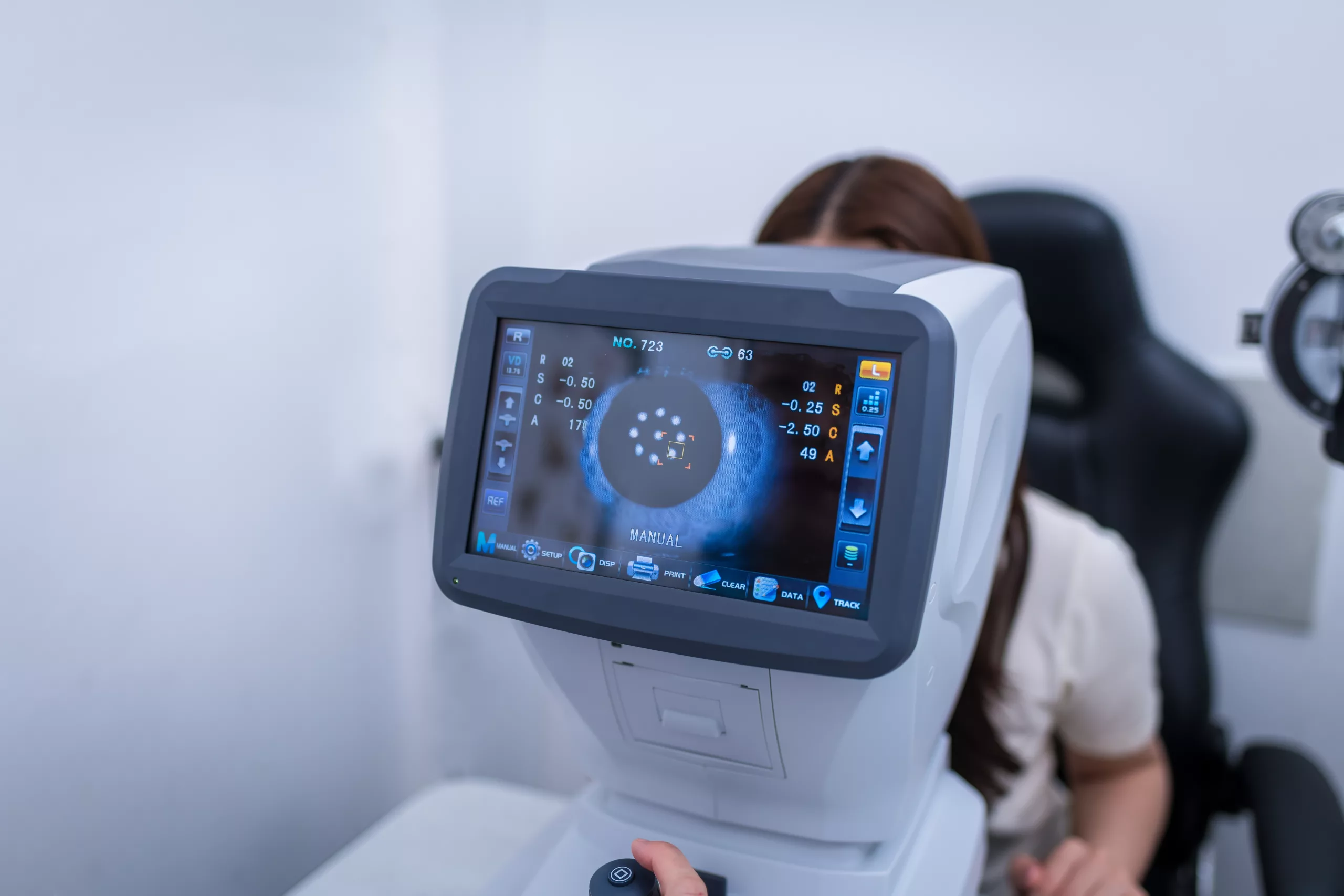Non-Contact (Air-Puff) Tonometry: A Comprehensive Guide
Introduction
Non-contact tonometry, often referred to as air-puff tonometry, is a widely used method for measuring intraocular pressure (IOP) in the eyes. Unlike traditional contact tonometry methods, it does not require direct contact with the eye, making it a convenient and less intimidating option for patients. This guide provides an in-depth look into the principles, procedures, advantages, limitations, and clinical applications of non-contact tonometry.
Understanding Non-Contact Tonometry
Non-contact tonometry is a diagnostic tool used to measure the pressure inside the eye, which is crucial in assessing eye health and diagnosing conditions such as glaucoma. The technique uses a puff of air to flatten the cornea temporarily. The device then measures how the cornea responds to this air puff to determine the IOP.
Key Components:
- Air-Puff Mechanism: Delivers a controlled burst of air to the eye.
- Sensor: Measures the degree of corneal flattening.
- Computer System: Calculates the IOP based on the data collected.
Procedure
- Preparation: The patient is seated comfortably in front of the tonometer. They are usually asked to rest their chin on a support and look straight ahead.
- Air-Puff Delivery: The device delivers a brief puff of air onto the surface of the eye.
- Measurement: The tonometer measures the time it takes for the cornea to return to its normal shape after the air puff and calculates the IOP.
- Results: The measurements are displayed on the device’s screen, providing the clinician with the IOP reading.
Advantages of Non-Contact Tonometry
- No Direct Contact: Reduces discomfort and the risk of infection.
- Quick and Efficient: The procedure takes only a few seconds and is often performed as part of a routine eye exam.
- Easy to Use: Requires minimal training for practitioners compared to other tonometry methods.
- No Anesthesia Required: Eliminates the need for anesthetic drops.
Limitations of Non-Contact Tonometry
- Less Accurate in Some Cases: May not be as precise as contact methods, particularly in patients with corneal abnormalities.
- Intraocular Pressure Variations: Can be affected by factors such as corneal thickness and curvature, leading to potential inaccuracies.
- Patient Factors: May be less effective in very young children or those who cannot maintain the required position.
Clinical Applications
Non-contact tonometry is primarily used for:
- Routine Eye Exams: As part of regular check-ups to monitor eye health.
- Glaucoma Screening: To detect elevated IOP, which is a risk factor for glaucoma.
- Monitoring: For patients already diagnosed with glaucoma or other eye conditions that affect IOP.
Best Practices and Tips
- Patient Preparation: Ensure patients understand the procedure to minimize anxiety and movement.
- Calibration: Regularly calibrate the tonometer to maintain accuracy.
- Comparison with Other Methods: Use in conjunction with other tonometry methods or diagnostic tests for a comprehensive assessment.
Future Directions
Advancements in technology may improve the accuracy and ease of non-contact tonometry. Research is ongoing to develop more refined devices that can provide more accurate measurements and better cater to diverse patient needs.
Conclusion
Non-contact tonometry is a valuable tool in modern ophthalmology, offering a non-invasive and efficient method for measuring intraocular pressure. While it has its limitations, its advantages make it an essential part of routine eye care and glaucoma management. By understanding the principles and applications of non-contact tonometry, both patients and practitioners can benefit from improved eye health monitoring and diagnostic accuracy.
World Eye Care Foundation’s eyecare.live brings you the latest information from various industry sources and experts in eye health and vision care. Please consult with your eye care provider for more general information and specific eye conditions. We do not provide any medical advice, suggestions or recommendations in any health conditions.
Commonly Asked Questions
Yes, you can wear contact lenses during the test. However, it’s usually recommended to remove them before the test for the most accurate results, especially if you are using contact lenses that might alter the shape of the cornea.
Non-contact tonometry is fairly accurate for routine screening, but it might not be as precise as contact methods, especially in cases of corneal irregularities. Your eye care professional may use additional methods to confirm results.
Non-contact tonometry is generally safe and does not cause harm. The air puff is brief and gentle, and the procedure does not involve physical contact with the eye.
Elevated intraocular pressure could indicate a risk for glaucoma or other conditions. Your eye care professional will likely recommend further testing and a comprehensive evaluation to determine the cause and appropriate management.
Non-contact tonometry is less invasive and does not require contact with the eye, making it more comfortable for some patients. However, other methods like applanation tonometry might offer more precise measurements in certain cases.
Certain medications, especially those that affect fluid balance or eye pressure, might influence IOP readings. It’s important to inform your eye care professional about any medications you are taking.
Yes, non-contact tonometry is often used for children. However, the child must be able to stay still and follow instructions to ensure accurate results.
While non-contact tonometry is effective for measuring intraocular pressure and screening for glaucoma, it does not diagnose all eye conditions. Additional tests might be necessary for a comprehensive evaluation.
Frequency depends on your eye health and risk factors. For routine eye exams, it might be performed annually. If you have risk factors for glaucoma or other eye conditions, your eye care professional might recommend more frequent testing.
The test is generally quick and painless. You might feel a brief, gentle puff of air against your eye. Some people find it a bit startling, but it typically does not cause discomfort.
news via inbox
Subscribe here to get latest updates !







